The architecture of large applications can be explored and navigated live.
The short GIF below shows a graph made of 15,000+ classes with a zoom on System.String and then System.Dictionary
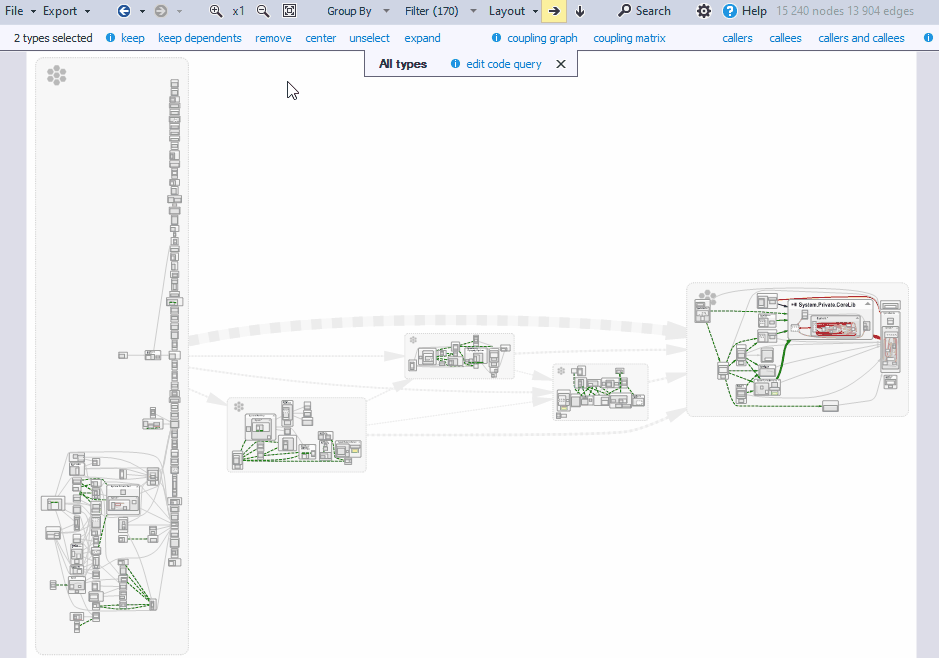
Click an edge between 2 elements then click one of the links coupling graph.
A graph made of children elements involved in the coupling is shown, for example all classes involved in the dependency between two projects.
In the background a code query is generated to match elements shown within the coupling graph.
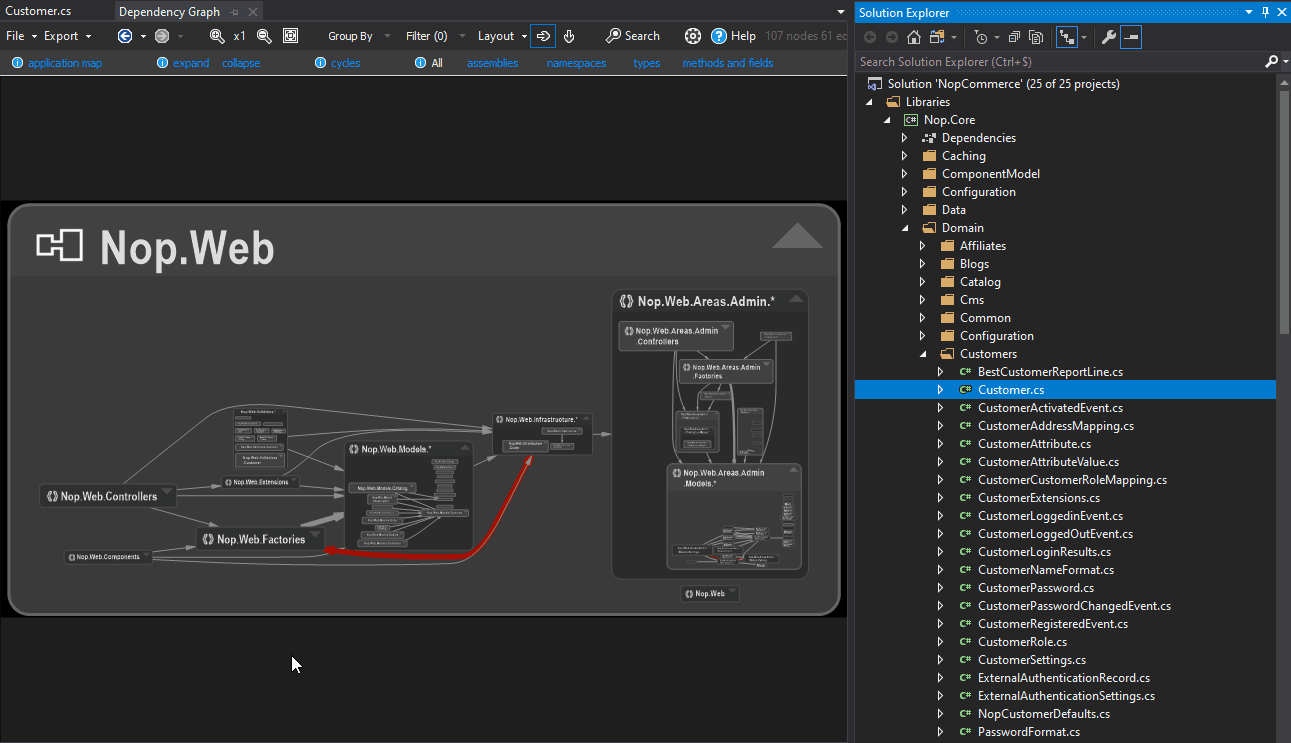
If a baseline is available the changes map link opens the search panel to search classes, methods and fields added or modified since the baseline and exports these elements to the graph.
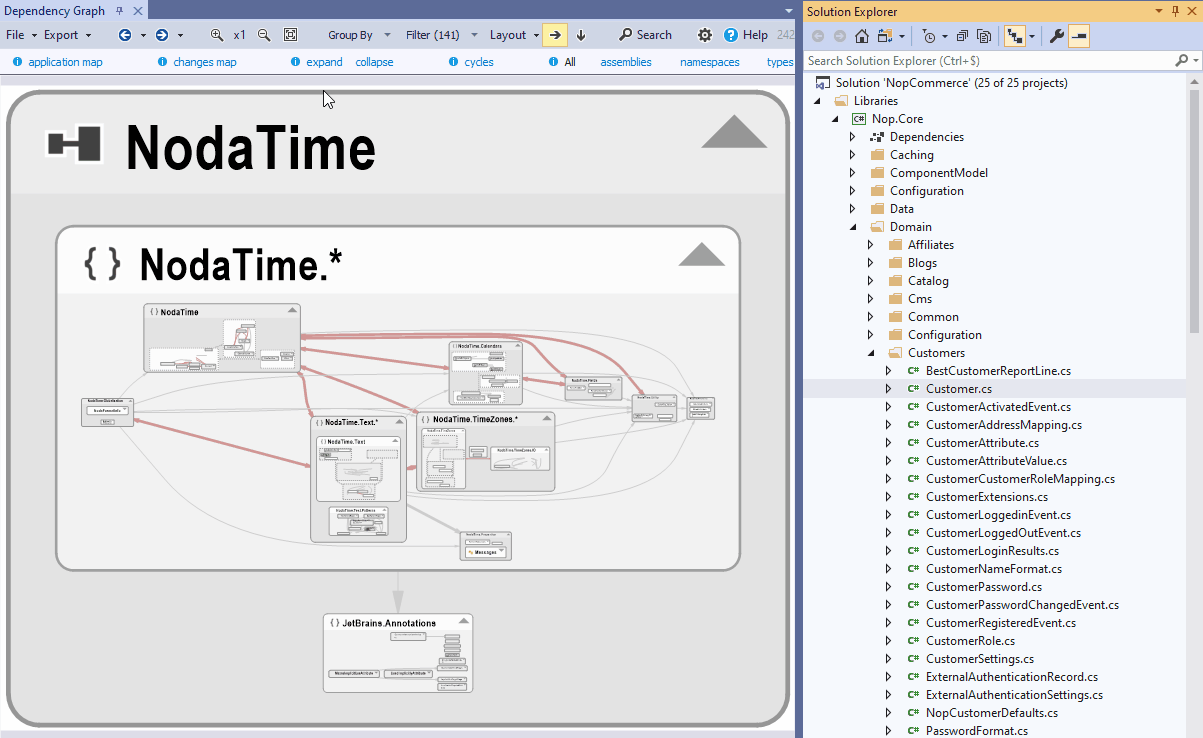
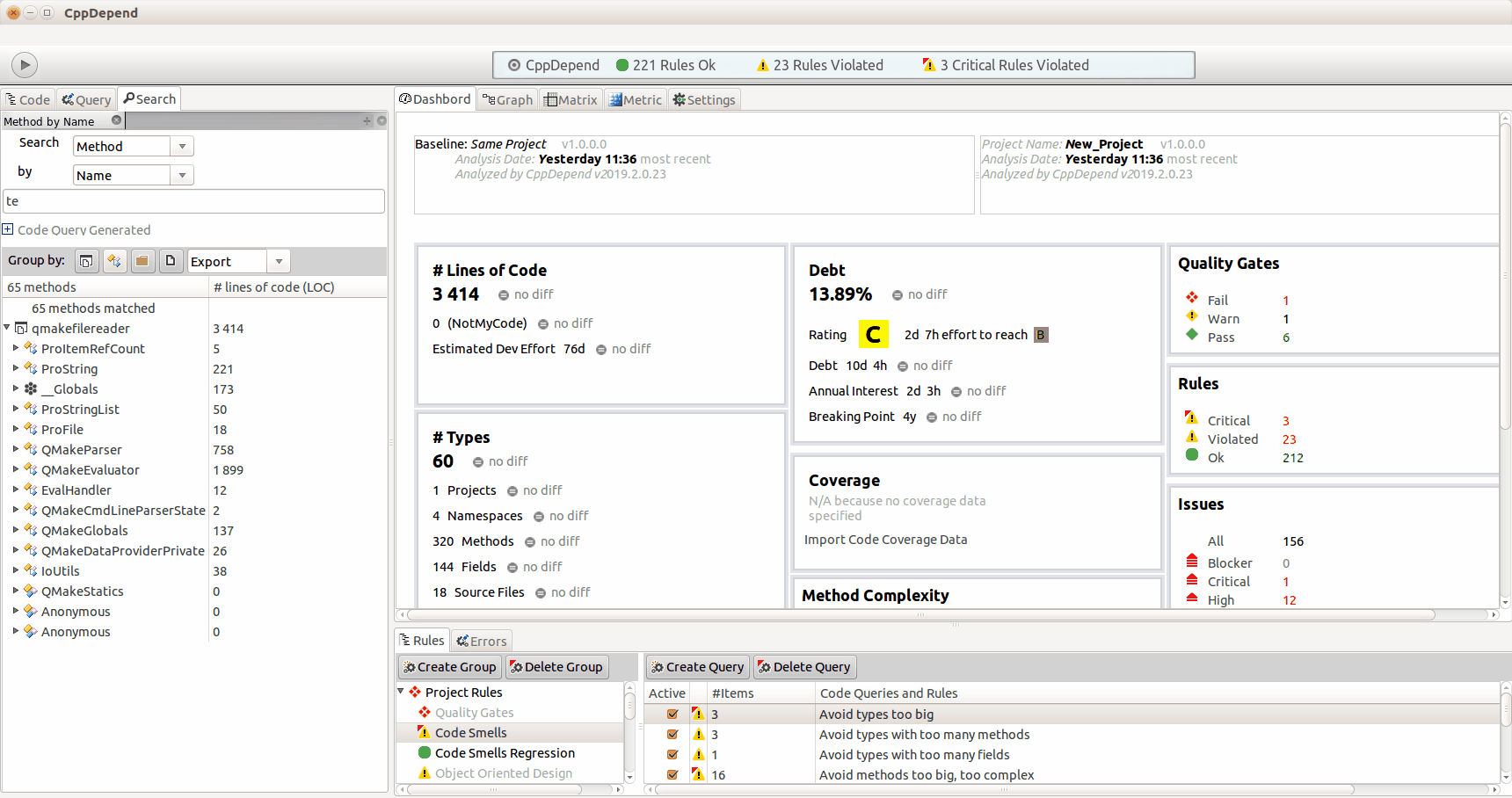
CppDepend fully supports now the analysis of the CUDA-based applications.
When you create a new CppDepend project you have the choice to use a logical view (code grouped by namespaces), or a physical view ( code grouped per file).
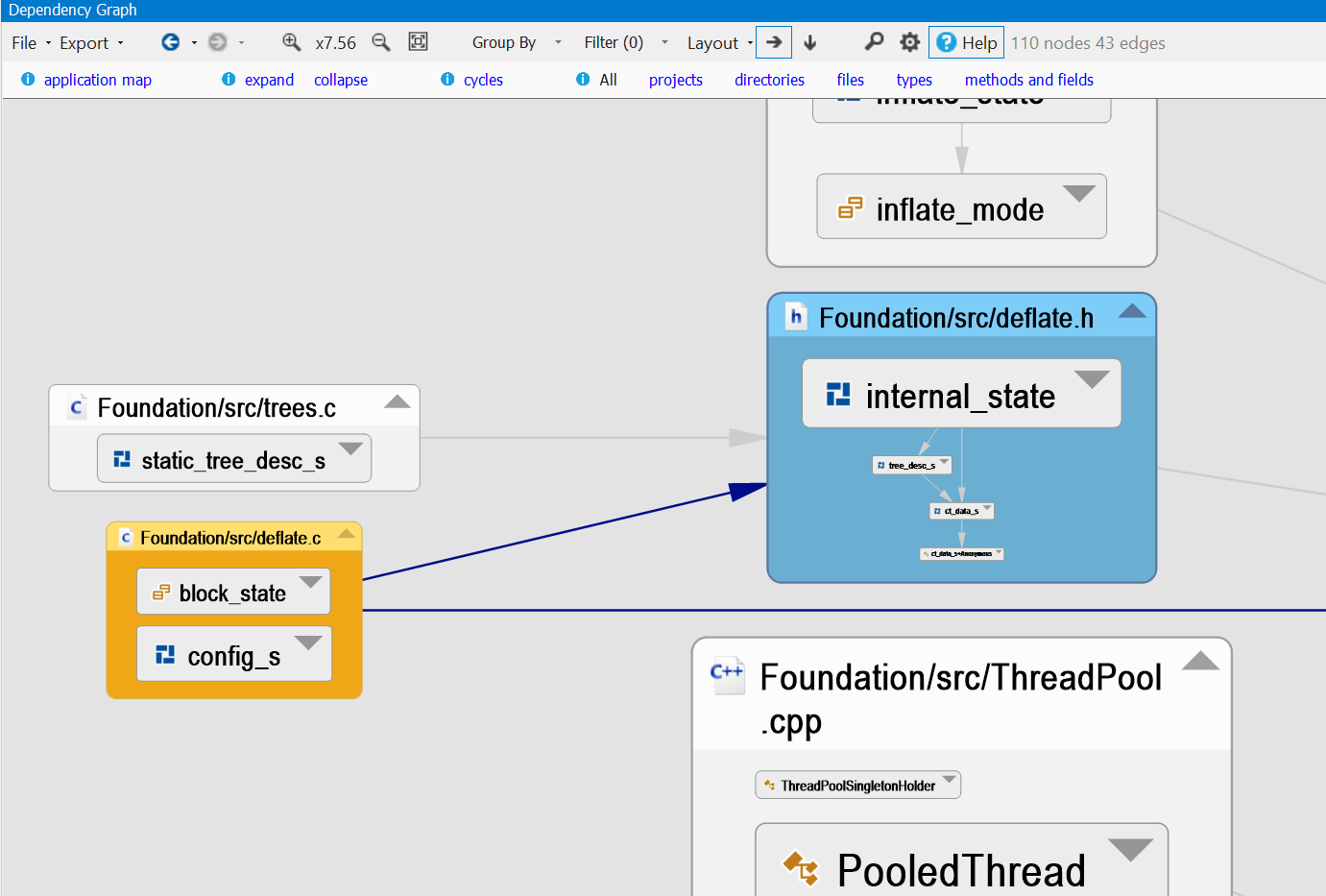
CppDepend can be now integrated to Bamboo and AppVeyor.
Search for elements by name on large graphs consisting of hundreds or thousands of elements in real-time.
Keep or remove matched elements.
Regex supported.
The short GIF below searches all namespaces whose names contain the string customer, selects them and then expands them to show all their children classes.
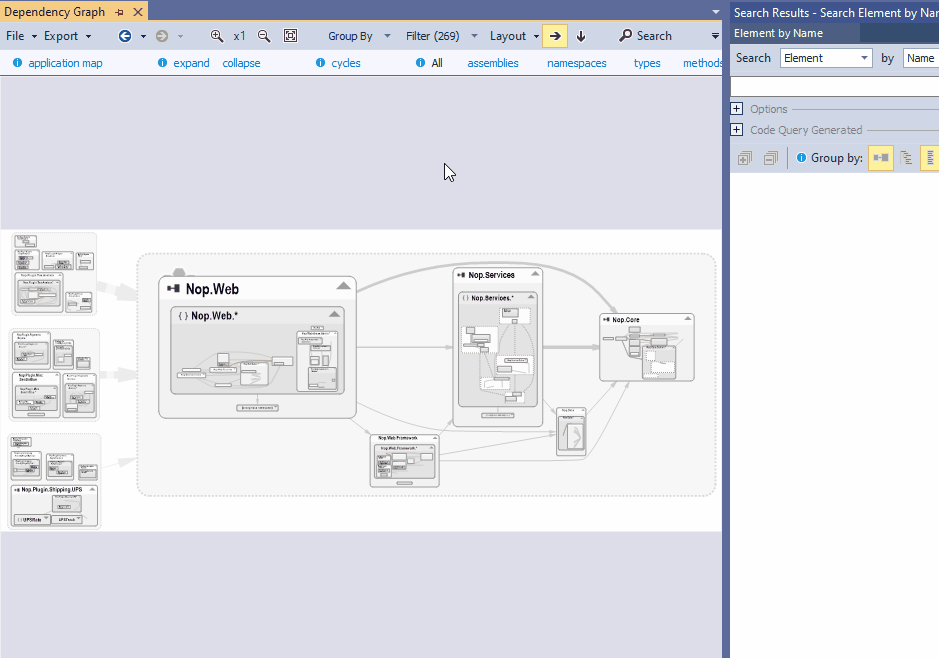
Click a code element to select it and then click one of the links: callers and callees, callers or callees
Use a combo-box to select the call depth. A call depth value N greater than one means that elements calling elements ... (N times) ...calling the element(s) selected are shown.
A call graph can be obtained from several elements selected.
In the background a code query is generated to match elements shown within the call graph.
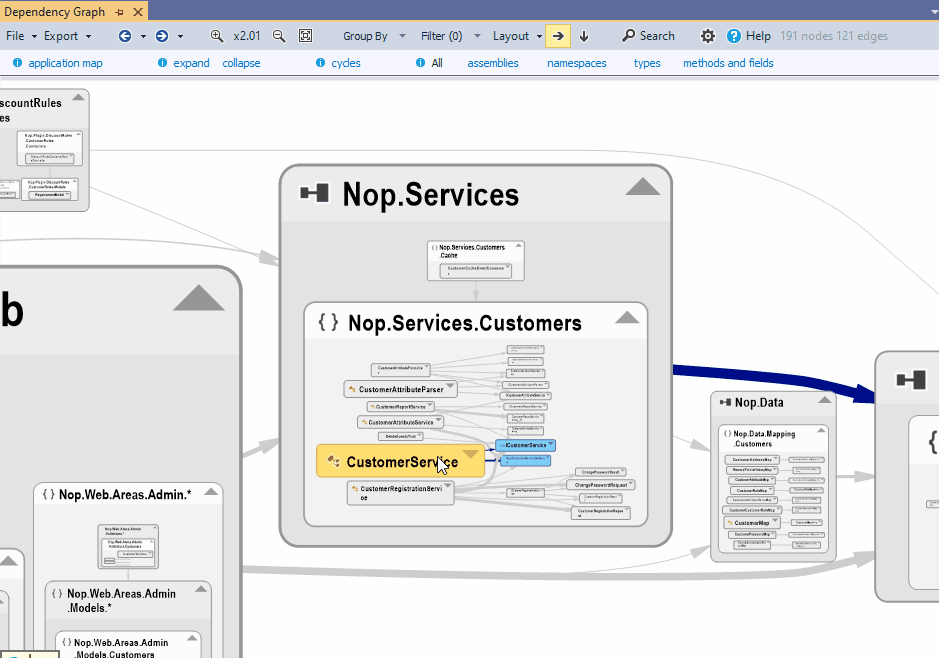
Dependents of the selected elements and related edges, are instantly highlighted. This also works for the hovered element if no selection.
A help panel is shown by default to explain the color convention and can then be discarded
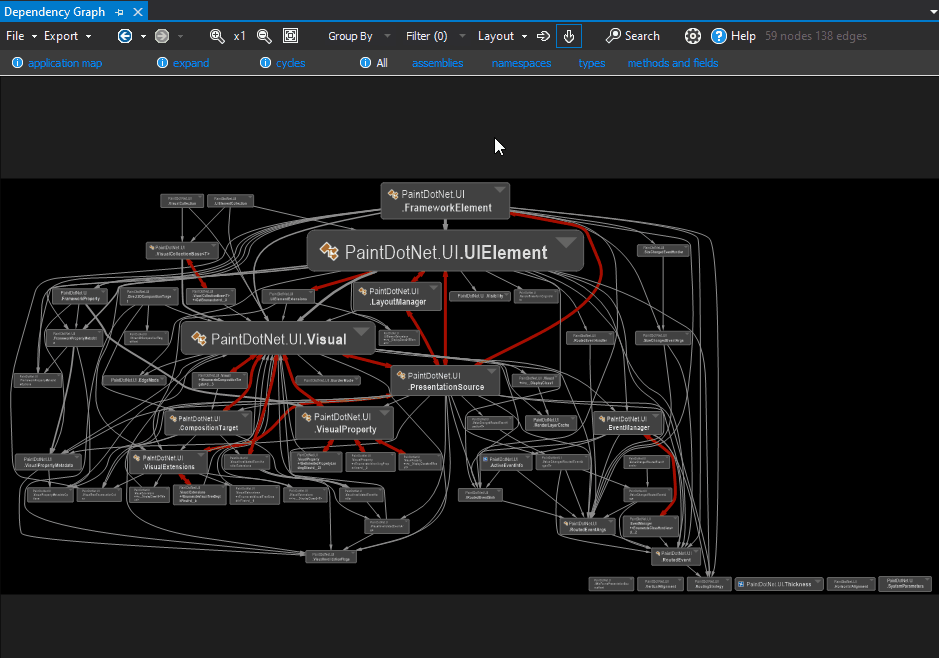
Click the images below to open some SVG vector graph in your browser.
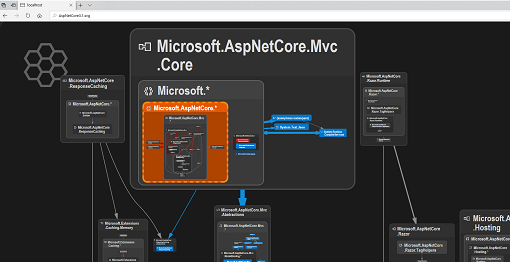
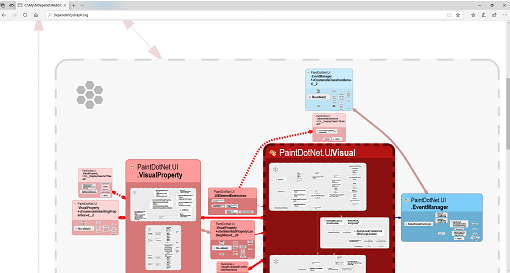
The cycles link edits a code query that matches cycles between namespaces.
In the GIF below, a cycle of 30 namespaces is exported to the graph. These 30 namespaces all depend on each other and together they form a super-component.
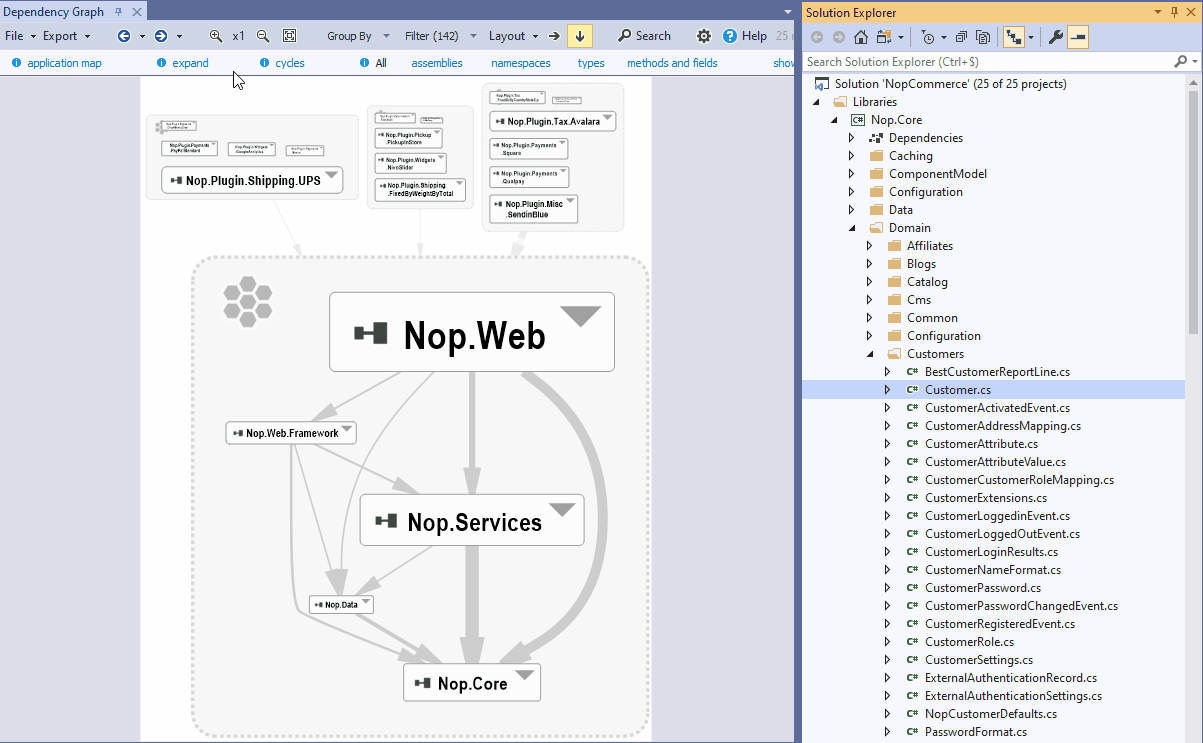
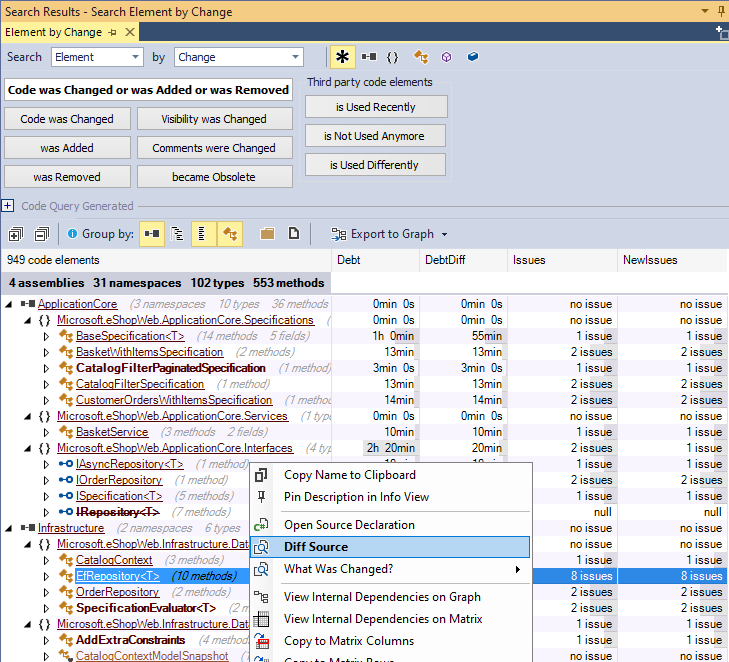
With CppDepend, software quality can be measured using Code Metrics, visualized using Graphs and Treemaps, and enforced using standard and custom Rules.